A clean energy future
Everyone deserves clean, renewable energy. It’s cheaper, more sustainable, and makes our planet more green and peaceful.
Aotearoa needs heaps more solar & wind energy – let’s work together to transform our energy system!

New Zealand’s energy system is broken
New Zealand is a country rich in renewable resources that could power our whole society – with electricity generated from existing hydro and lots more solar, wind and geothermal.
Yet the energy system is broken. It incentivises the Gentailers (the four big power companies) to keep burning fossil fuels and charge us all more for electricity.
The free market model installed in the 1990s delivers higher prices for everyday energy users.
High power prices harm the health and wellbeing of any one of us trying to heat our home and look after whānau.
And the continued use of fossil fuels risks our shared future as it makes the climate crisis worse, and slows down our efforts to adapt to the impacts of the climate crisis.
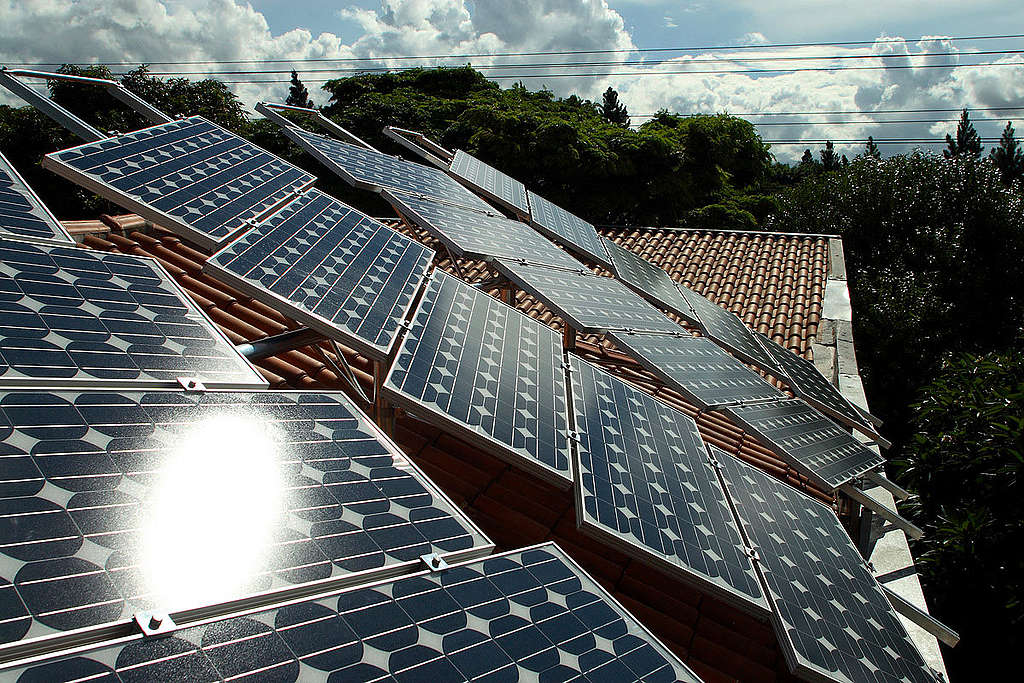
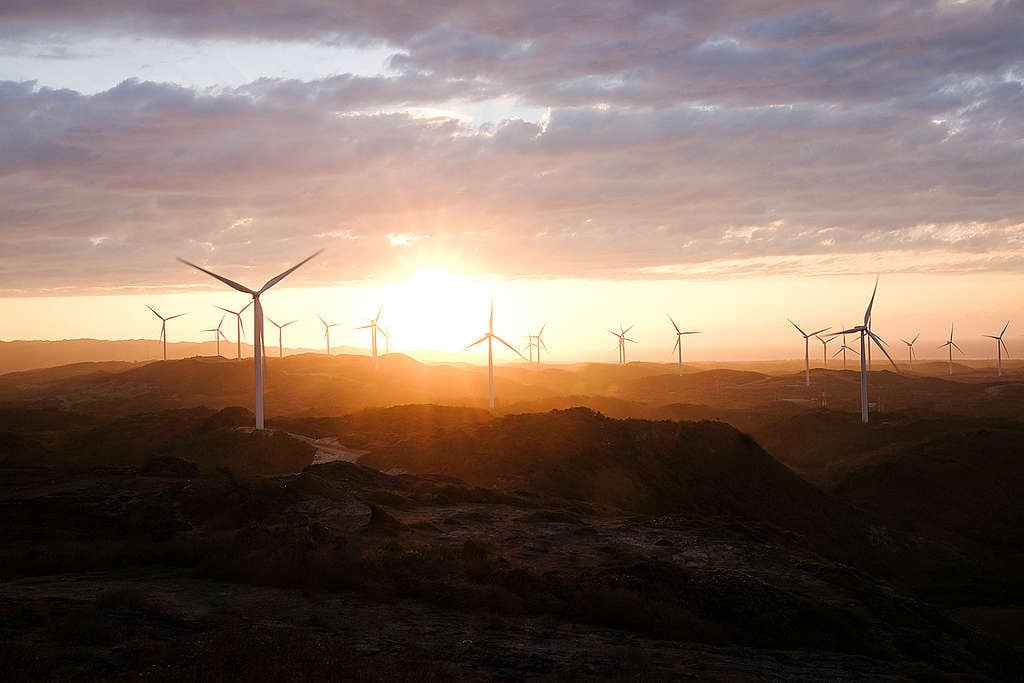
We’re experiencing a manufactured electricity crisis
New Zealand is wealthy in potential energy resources, yet the four big electricity generators are ripping us off.
1 in 5 households in Aotearoa report having trouble paying the power bill. 1 in 8 are cutting back on heating because of high costs.
Meanwhile in 2022-23, the big four electricity companies took in $2.61 billion. That’s about $7.1 million a day.
But it doesn’t need to be this way!
Averting the energy crisis, averting the climate crisis
Modern society’s addiction to fossil fuels is driving warming oceans, the melting Arctic and species extinctions. The climate crisis is right now destroying whole communities with extreme flooding and fire events. The United Nations has called this ‘code red for humanity’.
Everyone deserves to live free from fear of wildfires, floods and droughts. We need to get off fossil fuels to have a chance to reduce emissions and climate pollution.
By rapidly moving Aotearoa towards 100% clean renewable energy, we can stabilise our impact on the climate. The actions we take now will avoid even-worse disasters in the future.
What is Greenpeace doing for a clean energy future?
Greenpeace is calling for a clean energy future. This is an energy future of electricity and transport sectors powered by homegrown energy from the sun and wind and no dependence on fossil fuels.
We’re calling on our political representatives to reject new fossil fuel generation, new oil and gas exploration or new coal mines. We’re also pushing the Government to lead the transition of our country away from old technologies.
New Zealand’s electricity system is already mostly powered by renewable energy such as hydro. But around 60% of our total energy use still comes from the fossil fuels used in transport and industry.
That’s why we need heaps more renewable electricity. We can:
- remove all barriers to increasing solar and wind generation
- increasing storage capacity
- building the infrastructure for electric power
- supporting local communities to integrate their own small-scale power generation
What could a clean energy future look like?
There is no need for new fossil fuels to keep the lights on. Our clean energy future will build on our existing strengths – renewable energy.
1. Locally generated energy
Household or neighbourhood solar projects are a simple way to take the power back into our own hands.
By putting power generation in the hands of households and local communities everyone in New Zealand could have access to cheap clean energy.
2. Electrified energy
New Zealand’s electricity generation is already 80-85% from renewable sources.
Let’s push all the way! A 2024 Government report looked out to 2050 and plotted a scenario where renewable generation goes over 98%. By rapidly shifting the transport sector to electrification we could massively reduce fossil fuel use.
3. Reduced peaks in demand
Right now the power generation capacity can deal with peaks in demand. But it’s possible to redesign our energy system to significantly smooth out peaks.
Financial incentives and tech tool can smooth out peaks in demand, which boosts efficiency.
4. Increased energy efficiency
Using electricity for things like transport is so much more efficient than burning petrol and diesel. We can design our transport and housing systems for better energy use.
Heaps more solar and wind generation will mean that most of the stored hydro electricity only needs to be released when there is higher demand.
A low carbon, clean energy Aotearoa will mean cheaper electricity, healthier people and work towards a stable climate.
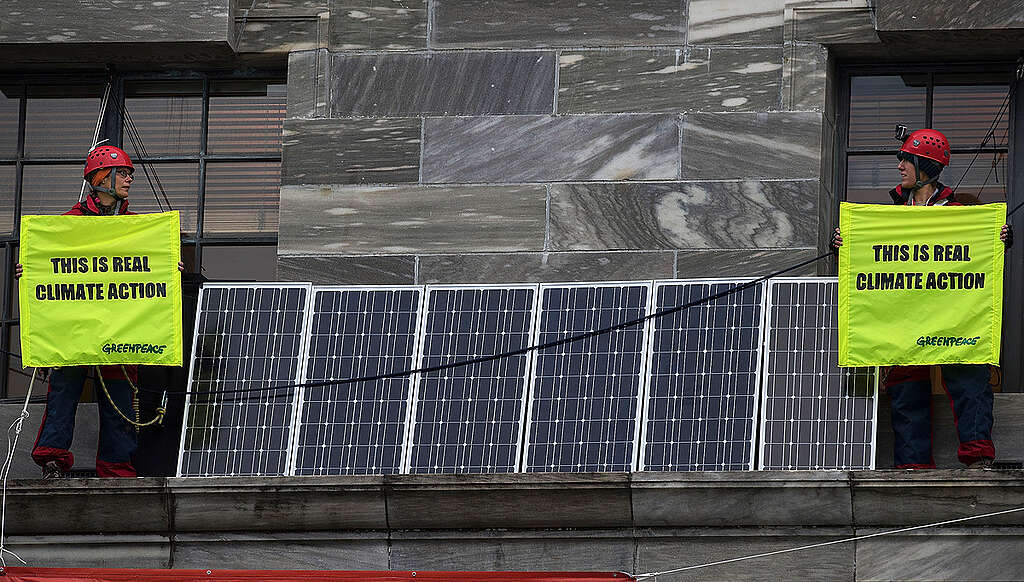
The Gentailers’ system of scarcity
The big Gentailer companies (Meridian, Contact Energy, Genesis and Mercury) could be investing in new clean energy sources, but they make the most profits when energy is scarce.
So the big four power companies limit their investments in renewables and keep burning fossil fuels.
There is a myth that requirements for project consents slow down the building of more electricity capacity. Yet even when new renewable energy projects have consent, they’re not being built.
By not regulating this broken market, the Government is prioritising profits over the needs of everyday people.
FAQs on clean energy
Because our forebears built New Zealand’s electricity system mostly on large hydroelectric dams instead of fossil fuel plants, our existing electricity generation is already 80-85% from renewable sources. Hydro power makes up over 50%, and then geothermal and wind.
However renewables make up only around 40% of our total energy use. Fossil fuels – oil, natural gas and coal – generate 60% of energy used for transport and other sectors.
The design of the present lightly regulated electricity system means four big power companies (the ‘Gentailers’) dominate 85% of the market.
The Gentailers restrict electricity supply and keep fossil fuels burning to enjoy higher electricity prices – which means more profits for their shareholders. They tend to pay their shareholders back dividends instead of investing in new renewable generation capacity.
No.
The Luxon Government pointed to high power prices as a reason for removing the successful ban on offshore oil and gas exploration. However this cannot be justified. Even if a new discovery had by chance been made around 2018, it takes many years to develop a new gas field.
People in New Zealand are experiencing high power prices for other reasons. Mainly, there are four big power companies (the ‘Gentailers’) who are restricting electricity supply to enjoy higher electricity prices. This results in more profits for their shareholders.
The Gentailers are the four big power companies that generate and sell electricity: Contact, Genesis, Mercury and Meridian Energy.
The Gentailers control supply to keep electricity prices high – so they can keep their profits high. The New Zealand Government has 51% stakes in three of the Gentailer companies, so is also implicated in the profit model as a source of State revenue.
The Gentailers have extended the life of fossil fuel plants as part of their generation mix because it maintains higher prices.
What we call ‘natural gas’ is a fossil fuel, mainly methane – a powerful greenhouse gas.. It’s extracted from the ground in a similar way to crude oil. New Zealand’s natural gas (or fossil gas) fields are concentrated around and off the coast of the Taranaki region.
Gas is also used also for the production of fertiliser for New Zealand’s intensive dairy herds.
In 2021 the Climate Change Commission recommended a climate measure to ban home connections to the gas pipeline network in new buildings after 2025. In response Gas NZ used a mix of public advertising and political lobbying to stop politicians pushing through the idea.
We can do without fossil fuels such as gas to heat our homes and feed our households. For example, New York recently became the first US state to ban new residential natural gas connections from 2026.
The science is very clear now. All use of fossil fuels must be rapidly phased out if we have any hope of surviving climate catastrophe. Research shows that fossil gas is as bad as coal when it comes to climate pollution.
There are already sufficient gas reserves to cover the demand while new renewables are built. Gas can be phased out by replacing it with renewables through electrification, reducing overall energy demand through efficiency and sufficiency, and developing energy storage and demand flexibility.
For the extreme occasions when there is a supply shortage, New Zealand could a) incentivise heavy industries to temporarily reduce output; and b) fire up gas / coal / biomass that is otherwise sitting idle as a strategic reserve for the time of most need.
The Rena oil spill in 2011 is a very real example of the harm that an oil spill could cause to New Zealand’s marine environment.
The Rena oil spill in Tauranga devastated marine ecosystems, leaving penguins coated in oil and gannets dead on beaches. The oil spill clean up was a massive effort by local communities in Tauranga, as well as national authorities, and it took a long time.
The spill occurred when the ship MV Rena, carrying oil, became grounded on the reef outside of Tauranga.
An oil spill from exploratory deep sea drill would be many magnitudes worse– the amount of oil spilled into the ocean would be increased, and it would be much harder to stop.
-
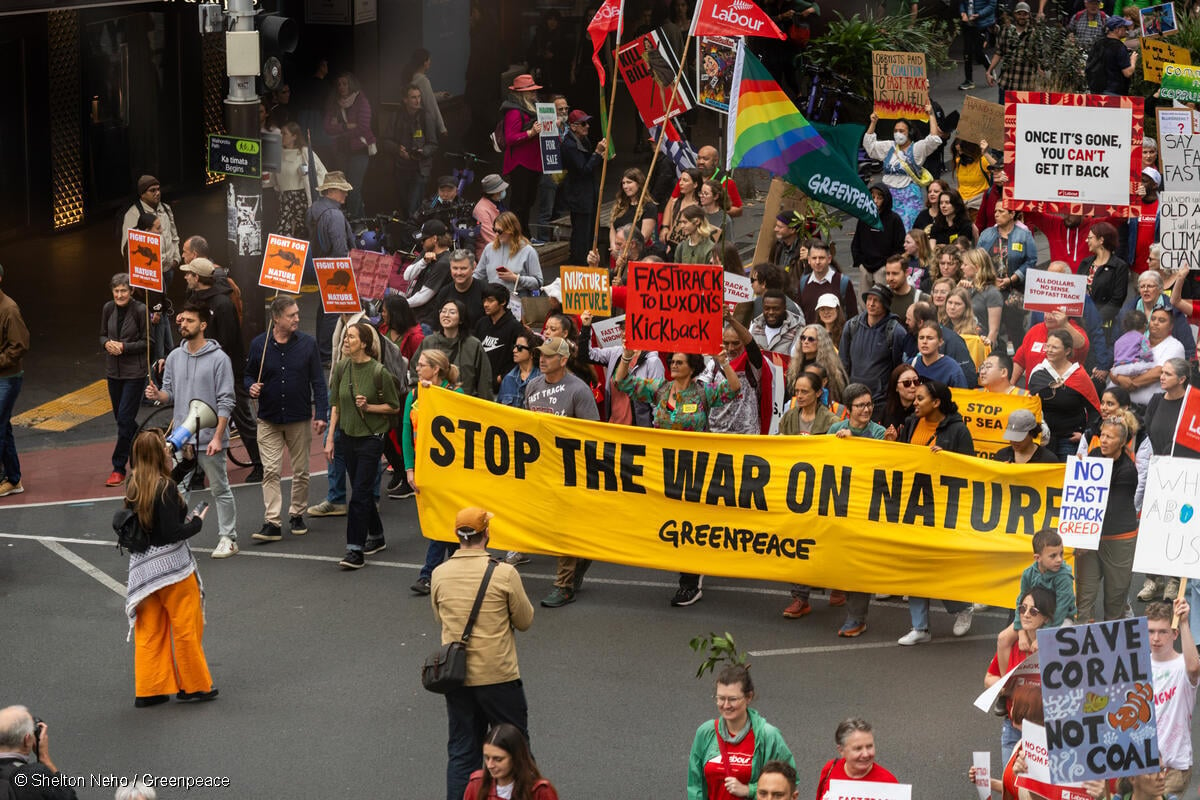
The populists’ war on ‘Woke’ is also a war on nature
New Zealanders recently gave the Luxon-led coalition government a record low rating of 4.2 out of 10 in the latest Ipsos Issues Monitor survey. Even falling concern about price inflation…
-
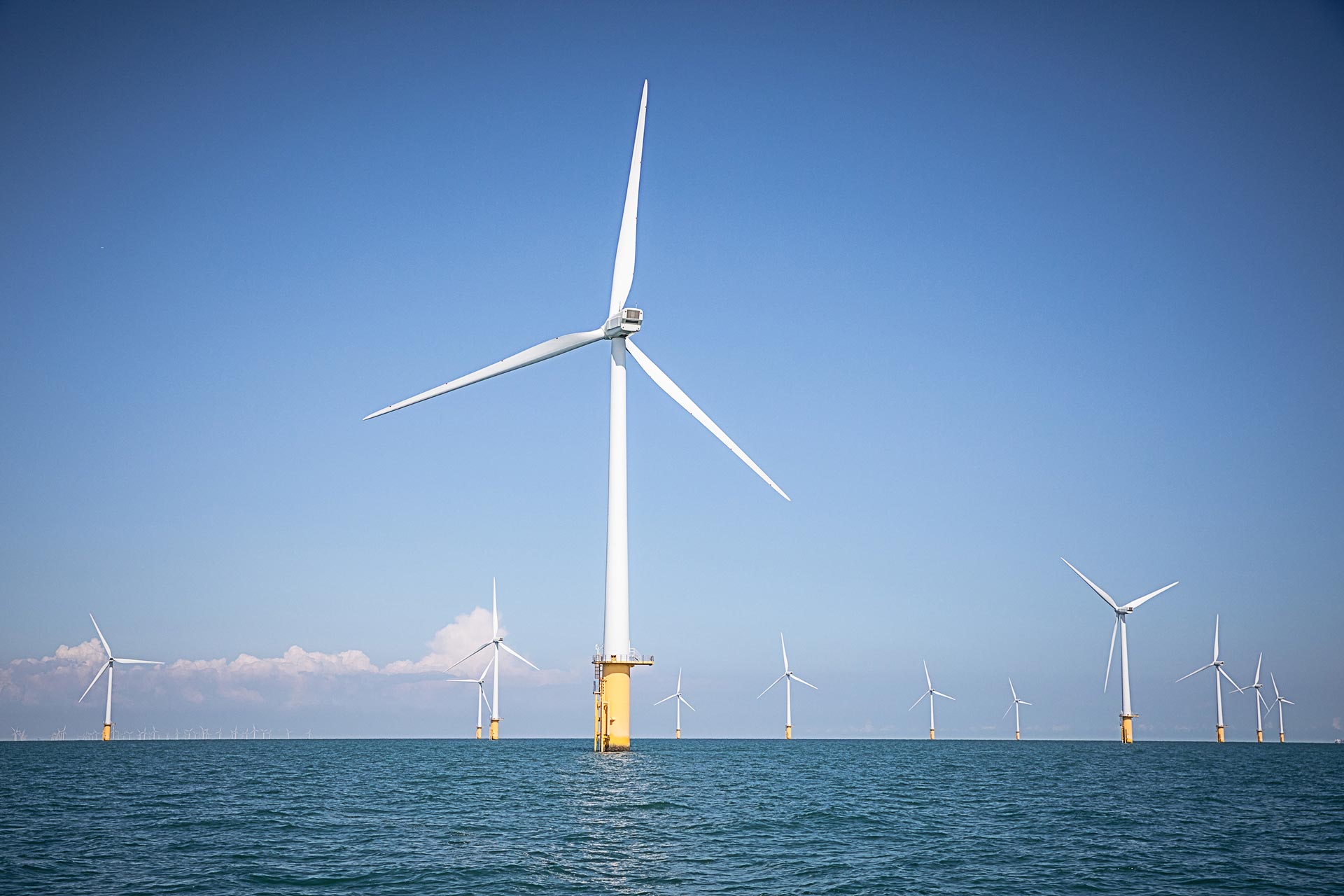
Luxon’s mining obsession drives away second offshore wind investor
Greenpeace is calling on the Government to restore confidence to offshore wind investors by cancelling the fast track process for seabed mining, after it was revealed today that another offshore…
-

One Year of Luxon’s War on Nature
There is a three-headed monster hunkered down in the Beehive. It squats on a huge pile of campaign donation gold collected from multinational corporations desperate to mine and destroy the forests, rivers, and mountains of Aotearoa.
